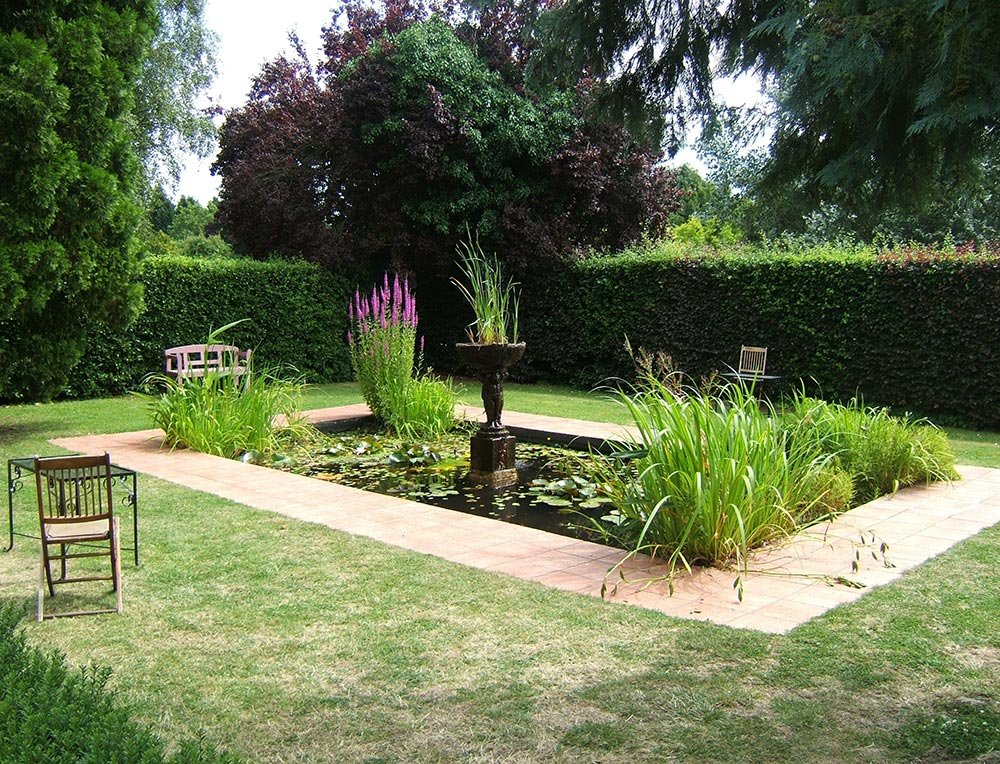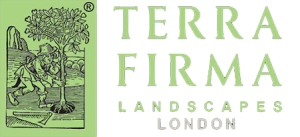A garden focal point is like the superstar of your garden — it’s the element that steals the show and grabs everyone’s attention. Picture it as the main character in a story, the thing that makes you go “Wow!” when you step into the garden. It could be a beautiful statue, a vibrant flower bed, a cosy sitting area, or anything that stands out and adds that special touch to your outdoor space. The focal point is the reason your eyes are drawn to a particular spot, making your garden feel unique and charming.
Having a focal point in your garden is the secret that ties everything together. It transforms your outdoor space from just a bunch of plants into a story with a star character. That focal point adds flair, making your garden memorable and inviting. It’s not just about looks; a focal point gives your garden a sense of purpose and personality. It guides the eye, creates visual interest, and turns a green space into a living, breathing experience. Plus, it’s a fantastic conversation starter when you have guests over – they’ll naturally gravitate towards the focal point, and before you know it, you’re sharing stories surrounded by the beauty of your garden. It’s not just about aesthetics; it’s about infusing life and charm into your little outdoor haven.

Here’s our step-by-step guide on how to create a compelling focal point:
Choose a strategic location
Identify a central or prominent location in your garden where the focal point will be easily visible from various angles.
Select a focal element
Choose an element that stands out, such as a sculpture, fountain, large plant, or unique structure. This should be something that complements your garden style and overall theme.
Consider scale and proportion
Ensure the size of your chosen focal element is appropriate for the space. It should be large enough to grab attention but not so overwhelming that it dominates the entire garden.
Scale and proportion are vital in garden design as they ensure visual harmony, human comfort, and overall design integrity. Properly scaled elements create a balanced and inviting environment, prevent dominance or insignificant focal points, and contribute to a smooth visual flow throughout the garden. In essence, attention to scale and proportion ensures that all elements work together seamlessly for an aesthetically pleasing space.
For example, if you have a small garden, you want to avoid high boundaries on either side. Having a lower boundary height will enable you to see across the garden which will make it feel bigger. Installing outdoor mirrors to create the illusion of greater garden length or width can help achieve this too. Use light coloured paving, light coloured flowers, and very low growing plants to give the illusion of height as well. Keep flowerbeds on either side slim so the garden feels longer than it is.
Use contrast
Create contrast between the focal point and its surroundings. This can be achieved through colour, texture, or shape. The goal is to make the focal point visually distinct.
Surround with complementary plants
Frame the focal point with complementary plants that enhance its beauty. Consider using plants with interesting foliage or those that bloom at different times to maintain year-round interest.
Incorporate lighting
Illuminate the focal point with strategic lighting to make it a captivating feature even during the evening. Use spotlights, up lights, or subtle string lights to highlight its presence. A flowering tree such as an Amelanchier makes a great visual statement. If your garden is sizeable, place three of them at the back and highlight with uplighting to really make them look sensational.
Mirrors can be an excellent and unique focal point in a garden. When strategically placed, mirrors can create a sense of depth, visually expand the space, and reflect the beauty of the surrounding plants and scenery. They add a touch of quaintness and can enhance the overall aesthetic appeal. Mirrors also play with light, making the space feel brighter and more dynamic. However, it’s crucial to consider the placement to avoid harsh reflections or potential glare. Additionally, choose mirrors designed for outdoor use to ensure durability and resistance to weather conditions.
Integrate seating
If space allows, consider placing seating around the focal point. A well-designed seating area provides a functional space for relaxation and also adds visual interest and a sense of purpose to the garden. Whether it’s a cosy bench nestled in a serene corner, a stylish set of chairs around a table, or a hammock hanging between trees, seating invites people to linger, enjoy the surroundings, and become part of the garden experience. You can enhance the seating area with cushions, throws, or decorative elements to make it even more inviting.
Create a path or access
Design a path leading towards or around the focal point to guide visitors and create a sense of anticipation. The journey towards the focal point enhances its impact.
Consider water features
Whether it’s a serene fountain, a bubbling birdbath, or a small pond, water features add a dynamic and soothing element to the outdoor space. The sound of flowing water creates a calming atmosphere, and the visual appeal of water can be mesmerising. Water features often attract wildlife, such as birds and butterflies, enhancing the overall charm of the garden. Additionally, the reflective properties of water can add a touch of magic, especially when combined with strategic lighting. Just ensure that the water feature aligns with the scale of your garden and complements its overall design. With the right placement and design, a water feature can transform your garden into a tranquil and captivating retreat.
Seasonal interest
Ensure the focal point has seasonal interest. This can be achieved by selecting plants that bloom at different times, incorporating seasonal decorations, or choosing a focal element that changes with the seasons.
Maintain balance
Maintain a balance between the focal point and the rest of the garden. It should enhance the overall design without overshadowing the natural beauty of the surrounding elements.
Personalise the focal point
Infuse your personality into the focal point. Whether it’s a unique sculpture or a custom-made structure, adding a personal touch makes the focal point more meaningful. You can keep this as simple as a hand-planted hanging basket filled with your favourite blooms, or a small circular bed full of flowers, or a hand-selected statue in the middle of the lawn.












